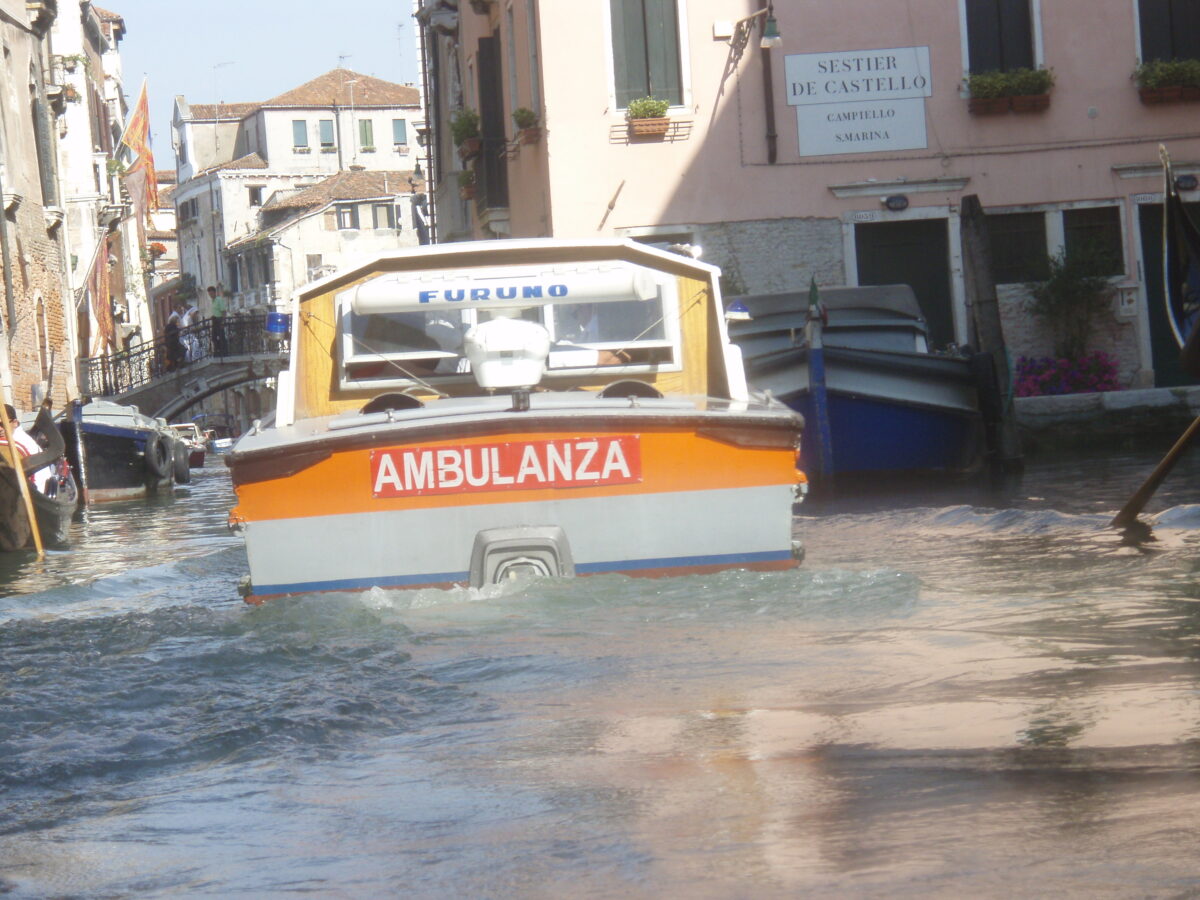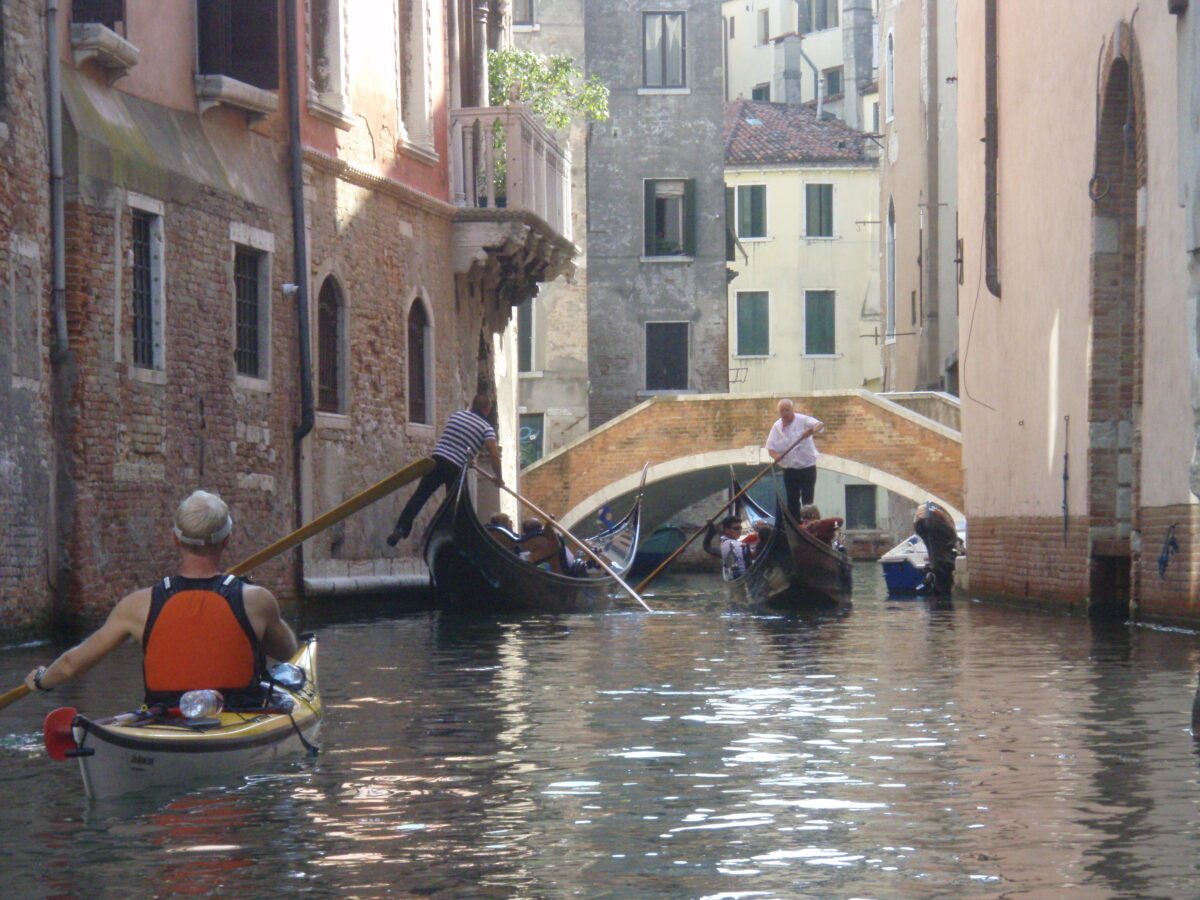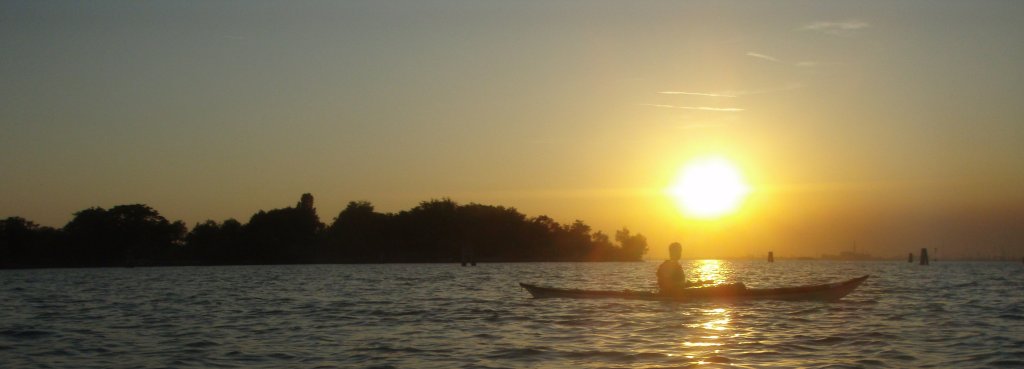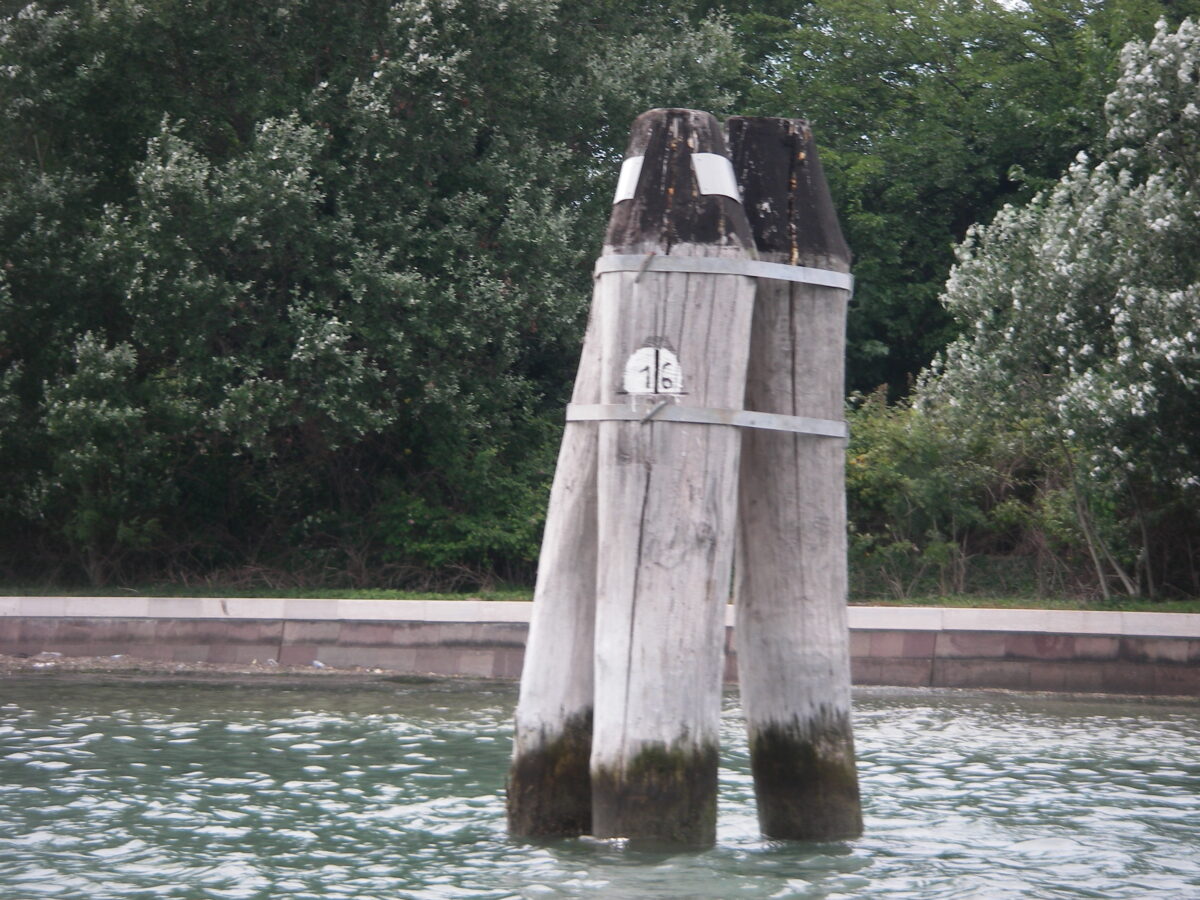In June I spent a week paddling with a friend in Venice and the lagoon.
The boats were on loan from a Venetian friend. As far as I know, there are no places in Venice where you can rent sea kayaks. My friend didn’t know any.
In the city
We spent two days paddling inside the city. Its not really that difficult as long as you follow a few rules.

Don’t get in the way of the locals. They live there, they work there, they have stuff to do and we’re just playing. It goes for the gondolas, the taxis, the ambulance and the carpenter’s barge. Always give right of way to the others. During the days in the city I spoke to many of the locals and the have no problems with kayaks in the canals, only with people misbehaving in the traffic.
When paddling with gondolas a few rules change. Gondolas have one oar to the starboard, so they always pass each other to the left, not to the right. That way they move close to the walls and only their oars cross. Kayaks must do the same or they will get in the way. When catching up with a gondola stay behind it, patiently. Only when the gondolier waves you forward should you pass.
Non motorised traffic can go practically anywhere. The only off-limits places we encountered were the military areas of the Arsenale. There are many places where motorised traffic isn’t allowed.

The smaller canals are very easy to navigate, just stay alert for the occasional motor boat or barge. The larger canals have more traffic and hence more waves. Beginners will probably have problems handling both the traffic and the waves.
The only areas that gave us a bit of a challenge were the Canale Giudecca and the area between Piazza S. Marco and the island of S. Giorgio. The heavier boat traffic in these areas caused more waves and when the waves met and reflected off the walls, some very chubby waves resulted. Again, not difficult for a reasonably experienced paddler, but most beginners would probably find it challenging.
It is necessary to master the various rudder and draw strokes before paddling in the canals of Venice. There are tight corners to negotiate and motor boats to evade. Bow and stern rudders are essential for turning in narrow spaces. The hanging draw is very efficient when you need to get out of the way in a narrow canal, since it doesn’t make you kayak turn, as is the sculling draw which is also useful since it works right up to the side wall of the canal.

When sitting against a wall waiting for other boats to pass, the waves from the passing boat have a tendency to drag the kayak away from the wall. Using a greenland paddle it is very easy to remain close to the wall. Hold one hand against the wall to avoid scratching the side of the kayak too much and let the paddle float on the other side of the boat. Grab the paddle in the middle, push it away from the kayak, lift it up and put it close the boat again and repeat. I don’t know if is has a name, but we can call it the Venice Push 🙂
The water in the canals isn’t quite as dirty as many people think. There’s a tide in the lagoon of Venice, with variations of up to a meter from ebb to flood, which ensures a regular exchange of water between the major canals of the city and the lagoon. On the other hand, the water isn’t exactly clean either. I definitely wouldn’t drink it or swim in it. In some of the smaller dead end canals it could be downright smelly and in some places it seems almost oily. Generally, the water is not a problem when paddling in Venice, just follow your nose and avoid the most smelly passages. If you want to practice your roll or rescue techniques, do it in the lagoon or on the beach.

In the lagoon
The lagoon has canals like the city. Most of the lagoon is very shallow, some parts of it exposed at ebb, so a system of canals have been made in the lagoon for larger ships. Kayaks can go almost everywhere anyway, so the best strategy is to avoid the canals as much as possible.

There can be as much traffic in the canals of the lagoon as in the city.The canals are marked by lines of wooden poles, made of three tree trunks put together. The canal is on one side of the poles only, and the tree trunk on that side has a number written on it. It might seem a bit complicated, but it is quite simple once you’re there.
The easiest way of getting around by kayak is to follow the canals on the wrong side of the markers. Nobody will sail there, or almost nobody, because there is always the speed obsessed maniac in a speed boat trying to cut a corner or avoid a vaporetto.
The tidal flows in the lagoon can be quite strong, easily in range of 2-3 knots, especially close to the three connections to the Adriatic Sea. When planning longer excursions in the lagoon, take the tidal current into account, or you risk doing the last 10 km with a 3 knots head current.

The hinterland of Venice is as flat as the Adriatic Sea, so it is possible to get strong winds from all directions, and also quite good waves in the lagoon. One day we had winds of 6-10 m/s, waves of ½-1 m and a current of 2 knots. Great fun as long as it followed us, less so on our return trip.
The area between Murano, Burano and S.Erasmo is very nice.
In the Adriatic Sea
The paddle to the sea from Venice is rather long. Both at the north and south end of the Lido there are very long jetties, and there are some restrictions on where you can go due to the construction of the new system to control the tides in the lagoon. From Venice proper it is at least a 5 km paddle to the beach.
The sea was quite calm the day we went there, we only got a bit of wind and waves as we approached Malamocco to the south of the Lido. The entire trip around the Lido was some 33km. The southern part of the Lido isn’t really that interesting.
All the large commercial ships enter at Malamocco at the south end of the Lido, from where they follow a canal in the lagoon to the commercial port of Mestre. The only larger ships passing at the north end of the Lido are cruise ships.
If you want to go?
So, what are the pre-requisites if you want to go to Venice for a paddling holiday?
First, you will have to bring your own kayaks. I don’t know any kayak rental places in Venice, and neither does my friend there.
Second, you’re better off speaking some Italian. Venetians in the tourist trade speak English, but don’t expect the carpenter in his barge in some minute canal to do so when he wants you out of the way for some reason. As you stray off the beaten track, communication with the locals will be a huge help in solving problems, whatever they might be.
Third, be prepared for a breathtaking experience 🙂
If you only fulfil the third criterion, there is still hope. My stay there was in preparation for a trip to Venice organised by my local kayak pusher Kajakhotellet.dk.
The trip will take place 9th to 16th September and it is open to everybody who knows basic paddling techniques. It is not a course, but we will spend some time on the various rudder and draw strokes you need in the canals.
The package includes transportation from the airport, accommodation in tents (bring your own) in a camping on the Lido, an informal welcome dinner, kayak, paddle, PFD, jacket, spraydeck, certified kayak coaches who speaks English, and at least two persons fluent in Italian. The flight to and from Venice is not included.
The price, flight and food excluded, is $835 or €605.
We can handle at most 12 paying participants.
I’ll post more on this blog when the final details are set.
Leave a Reply